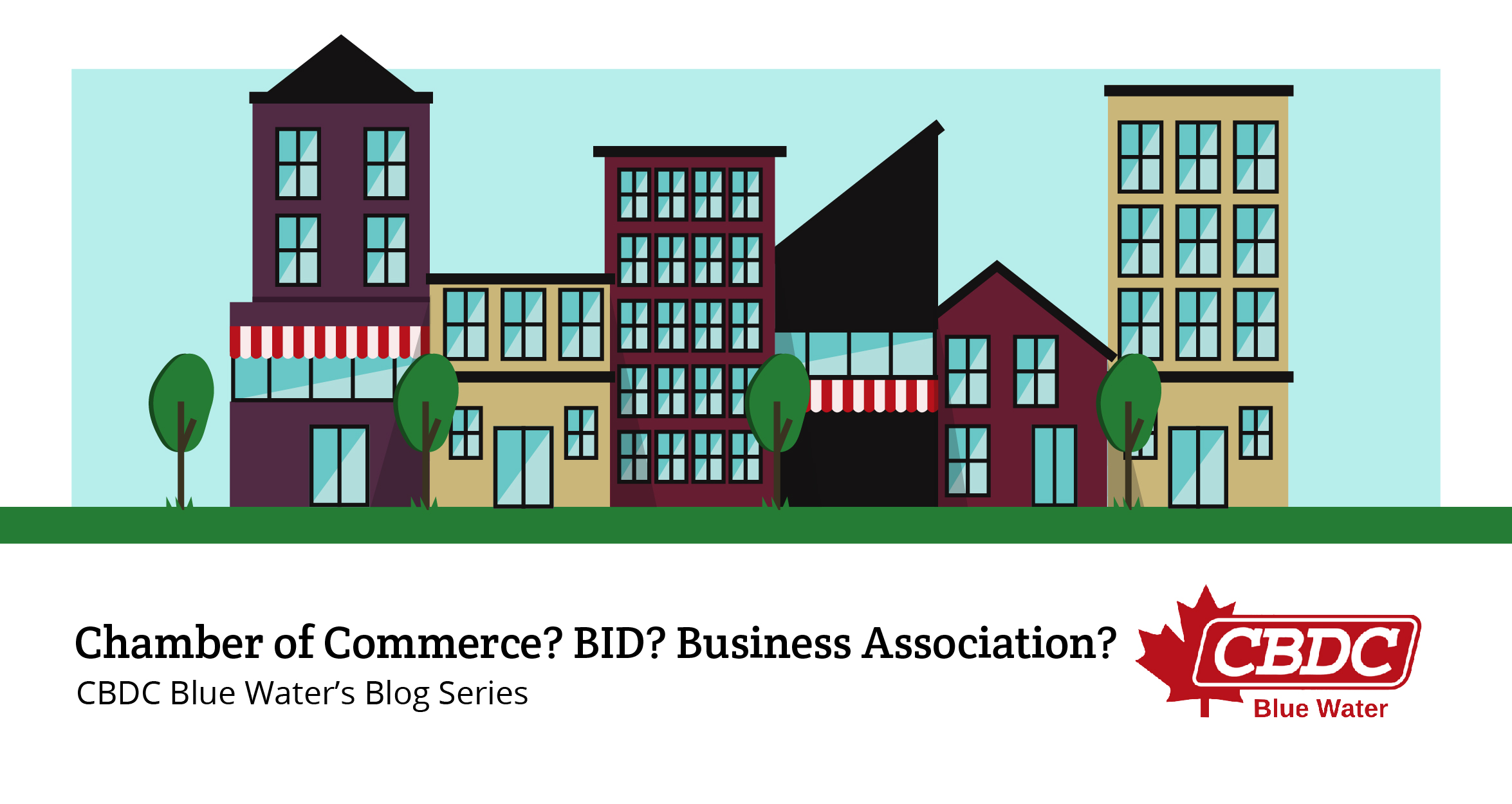
Chamber of Commerce? BID? Business Association? What is the Difference?
CBDC Blue Water is partnered with a number of business-focused organisations within our service area and our staff sit of the board of various chambers and associations. As CBDC’s Content Creator I mostly deal with stories and graphics. I’m still learning a lot about business and marketing. Admittedly, until very recently, I didn’t know the difference between a Business Improvement District, Business Association and a Chamber of Commerce. So, one day while sitting in the office trying to figure it out, I asked, what is the difference and our Executive director Chris Atwood explained it to me. Here is what Chris told me about the difference between these organisations. Hopefully, it helps you decide where to acquire memberships, or who to network with as you are growing your business. If you are feeling lonely in your entrepreneurship journey, are focused on business-to-business sales or just want to get to know more business owners in your community Chambers of Commerce, Business Improvement Districts and Business Associations are a good place to start. These organisations exist to unite businesses in a particular community, but often operate with different goals in mind.
Let’s start by talking about Business Improvements Districts (BIDs). BIDs operate within in a small defined geographic area and must be approved by the municipality they operate within. BIDs have borders and all businesses that fall within that border are considered part of the BID. Commercial properties within the BID’s area pay a business improvement levy on top of the regular municipal property tax. The BID can also draw on other public and private funding streams. An additional distinction between a BID and the other organisations, is the main focus of a BID is to improve infrastructure within their area of operation. The business improvement levy must be put back into the area, meaning BIDs are typically not-for-profit. Funds are often used for beautification of the BID area, to advocate for new infrastructure such as paths and sidewalks for pedestrians, and for marketing the area and its businesses. BIDs also host events or create attractions that will draw people to the area. If your business operates within the borders of a BID, whether you own commercial property or rent space, chances are you are already contributing to the BID, so take advantage of this and reach out to your BID, it may be a great resource for your business.
Chambers of Commerce are a little different than BIDs. The Atlantic Chamber of Commerce website defines a Chamber of Commerce as, “a voluntary business organization, supported by its member firms to promote the areas economic growth and development”. While the general definition sounds similar to a BID, the difference lies in the approach Chambers take to accomplish their goals of promoting an area’s economic growth and development. Firstly, Chambers of Commerce have a less defined border than BIDs. Any business, in or around the area, can acquire membership to a Chamber and a business can belong to multiple chambers if they wish. There are chambers that cover specific geographic regions and others that cover huge expanses. For example, If I look to our local area, there is:
The Musquodoboit Harbour & Area Chamber of Commerce,
The Halifax Chamber of Commerce.
The Atlantic Chamber of Commerce,
The Canadian Chamber of Commerce.
All of these Chambers technically cover the area but the chances that the national-level Canadian Chamber will invest their resources to improve Musquodoboit Harbour area are slim compared to joining the local Chamber.
Chambers often offer specific benefits to members like insurance packages, discounts for certain services and educational opportunities. Advocacy is really at the core of every Chamber. For this reason, Chambers often serve as a primary channel for communication between government organisations, policy makers and business owners. They host networking/marketing events and lobby for the interests of their members.
Business Associations are trickier to define because they do not have a rigid structure. They are often born from a group of volunteers and usually collect membership fees as a source of funding for their projects. Typically, but not always, they are non-profit organisations. Business Associations can also become BIDs or operate similar to Chambers. The structure of a Business Association is really defined by the people who run it and the interest they have in their businesses and communities.
Chances are that your community has a BID, Business Association or Chamber of Commerce. If it does not, there are regional, provincial or national organisations that offer memberships to business owners. Working at CBDC, I have the opportunity to meet with staff and members of some of these organisations in HRM. It has been an asset to me as I learn more and more about what it means to be a small business owner outside of our city’s center. So, if you are a small business owner looking to get more involved in your community and meet other entrepreneurs, I 100% encourage you to look into the organisations in your area.
